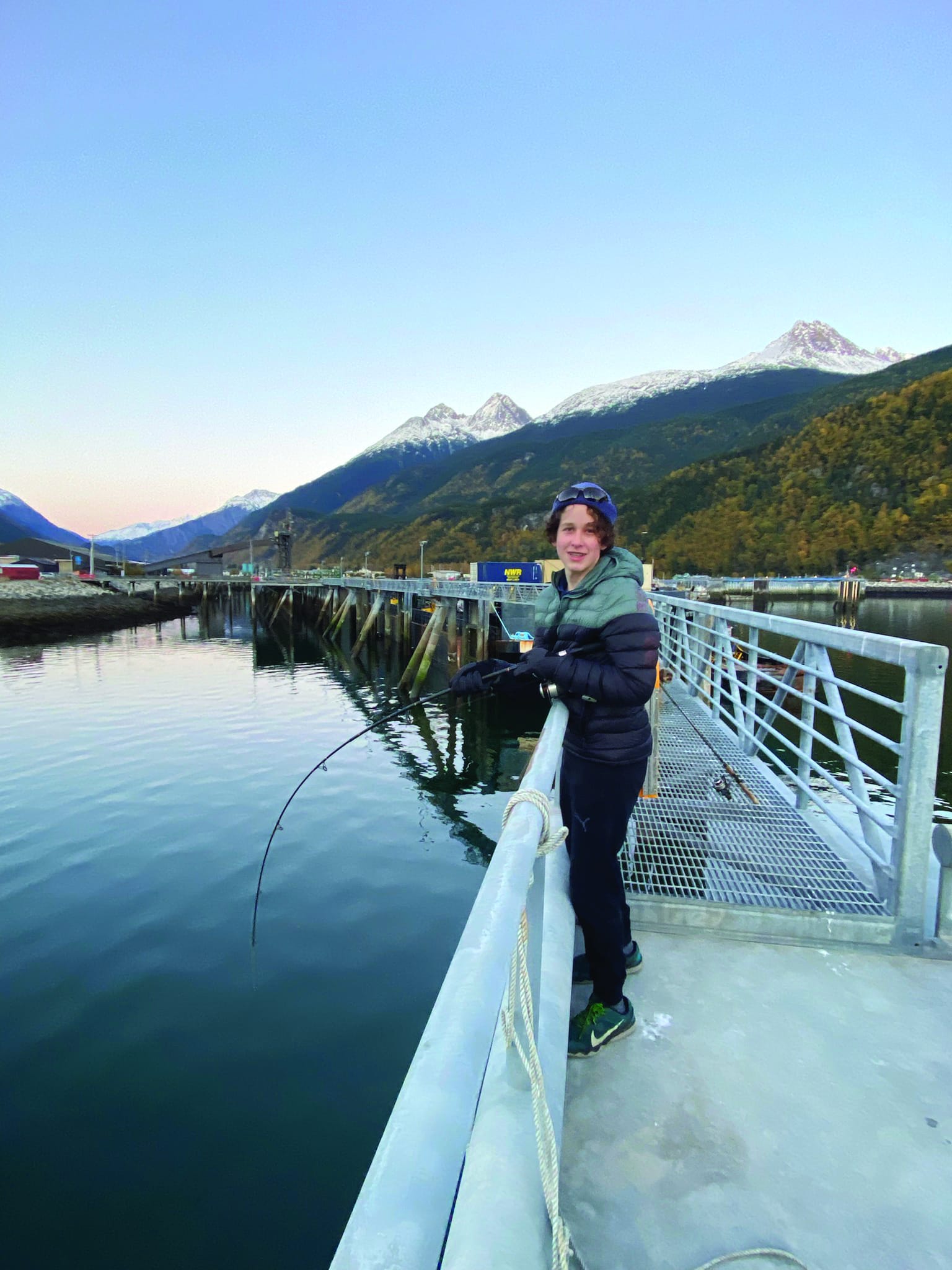By Andrew Cremata
Earlier this summer, Lynn asked me to take her and her teenage Liam fishing, because Liam was swiftly becoming a fishing fanatic. Whenever anyone makes such a request, I do my best to make it happen. Learning the art of angling builds character while connecting one’s spirit to the earth in a fundamental way. In the nihilistic postmodern age, grounding is more important than ever.
If you’re good at it, you even get a free meal.
Normally, when someone asks me to take them fishing we travel to the Yukon, catch a lot of fish, and learn a thing or two along the way. Traveling to Canada still isn’t easy and sometimes it’s not possible, so I decided to take Lynn and Liam fishing for flounder out on the Skagway docks.
When people imagine fishing in Alaska, small flounders aren’t even considered. Over the years I’ve learned that most people with little fishing experience don’t really care whether they catch flounder or king salmon, as long as they catch something. While Skagway isn’t exactly known for its fishing, there are usually plenty of small flounder to catch from the docks.
It wasn’t until Oct. 5 that I managed to find time for a fishing adventure. The weather cooperated and we met out on the Ore Dock to catch some flounder and learn a thing or two about various fishing rigs and angling techniques.
Using small chunks of herring for bait, we dropped our hooks 125 feet to the bottom and waited for a bite. Usually, it doesn’t take long but an hour and a half went by without so much as a tap. With dusk setting in, I began to think we were going to get skunked.
Suddenly, I felt something tugging on my line so I set the hook. Keep in mind that most of the flounders caught in Skagway are no more than eight ounces. They’re so small that I tie on two hooks and often catch them two at a time. Up until Oct. 5, the largest flounder I’d seen caught off the dock was about 15 inches long and weighed maybe two pounds.
So, when my rod bent over double and line started pulling from the drag, I assumed that I’d hooked into something other than a flounder. After getting the fish halfway in, I knew there was a problem. Using light gear and line, there was no way I would be able to lift the fish up onto the dock. Especially since it was low tide, which meant I would have to pull the fish up nearly 45 feet.
When the fish broke water, I was astounded to see that it was a massive starry flounder — by far the biggest I’ve ever seen both in and out of Skagway. I asked Liam to hold the fish in place while I improvised a plan to land the massive fish.
After removing a large treble hook from a Daredevle Spoon in my tackle box, I tied it onto another rod along with a small lead sinker to give it some weight. Next, I dropped it down next to the flounder and tried to snag it. If successful, Liam and I would use the power of both rods working in unison to land the fish.
After a few failed attempts, the hook got wrapped around the line on the other rig and I was unable to untangle it.
Back when I fished bridges and piers in Florida more than 26 years ago, I carried a bridge gaff for landing large fish. A bridge gaff is nothing more than a very large and heavy treble hook tied to a rope — a heavy-duty version of my improvised snagging rig.
Not only did I keep my bridge gaff when I moved to Alaska, somehow I knew exactly where it was. In my mind’s eye, I could see it in my shed, sitting on the shelf of my workbench next to a jar of reel grease and a box of hooks.
There was only one way we were going to land this fish — the mother of all Skagway flounders. When I said out loud that I was going to drive home and get my bridge gaff, Lynn said, “How far away do you live?”
It was a valid question. The flounder was going nuts in an effort to free itself and there was little chance the plan would work. So, I did the opposite of what any reasonable person would do. I ran back to my car and drove home to grab the bridge gaff.
It was dark enough outside that I had to turn on my phone’s flashlight to see my workbench but my bridge gaff was exactly where it was supposed to be. Less than five minutes after leaving, I was on my way back to the dock.
Meanwhile, poor Liam was doing his best to keep the fish on the line when it suddenly started thrashing and the line broke. Lynn noticed that the fishing rod I used to try and snag the flounder was suddenly bending over, so she grabbed it. Somehow, when the flounder broke the line on the first rod, it snagged itself on the treble hook tied to the second.
By the time I ran back onto the dock, Lynn was shouting excitedly and for a moment I thought she may have hooked into another fish. Then she explained the situation while I unraveled the bridge gaff and dropped the hook down into the water next to the fish. Lynn handed the rod to Liam, who held the fish steady while I worked the big treble hook underneath the fish.
It took three tries to actually snag the lunker flounder. When it was safely on the dock, it was high-fives all around. At nearly seven pounds, it’s no surprise that it took three people to land the undisputed flounder heavyweight champion of Skagway, and it’s a testament to the power of teamwork.
It’s also proof that while fishing stories may often seem unbelievable, they are always 100 percent true.






Leave A Comment